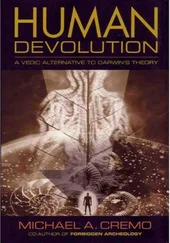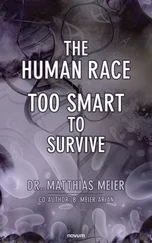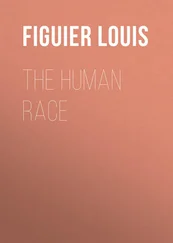Michael Cremo - Forbidden Archeology - The Hidden History of the Human Race
Здесь есть возможность читать онлайн «Michael Cremo - Forbidden Archeology - The Hidden History of the Human Race» весь текст электронной книги совершенно бесплатно (целиком полную версию без сокращений). В некоторых случаях можно слушать аудио, скачать через торрент в формате fb2 и присутствует краткое содержание. Год выпуска: 1992, ISBN: 1992, Издательство: Torchlight Publishing, Жанр: Старинная литература, на английском языке. Описание произведения, (предисловие) а так же отзывы посетителей доступны на портале библиотеки ЛибКат.
- Название:Forbidden Archeology: The Hidden History of the Human Race
- Автор:
- Издательство:Torchlight Publishing
- Жанр:
- Год:1992
- ISBN:9780892132942
- Рейтинг книги:4 / 5. Голосов: 1
-
Избранное:Добавить в избранное
- Отзывы:
-
Ваша оценка:
- 80
- 1
- 2
- 3
- 4
- 5
Forbidden Archeology: The Hidden History of the Human Race: краткое содержание, описание и аннотация
Предлагаем к чтению аннотацию, описание, краткое содержание или предисловие (зависит от того, что написал сам автор книги «Forbidden Archeology: The Hidden History of the Human Race»). Если вы не нашли необходимую информацию о книге — напишите в комментариях, мы постараемся отыскать её.
Forbidden Archeology: The Hidden History of the Human Race — читать онлайн бесплатно полную книгу (весь текст) целиком
Ниже представлен текст книги, разбитый по страницам. Система сохранения места последней прочитанной страницы, позволяет с удобством читать онлайн бесплатно книгу «Forbidden Archeology: The Hidden History of the Human Race», без необходимости каждый раз заново искать на чём Вы остановились. Поставьте закладку, и сможете в любой момент перейти на страницу, на которой закончили чтение.
Интервал:
Закладка:
J. S. Weiner himself noted: “Behind it all we sense, therefore, a strong and impelling motive. . . . There could have been a mad desire to assist the doctrine of human evolution by furnishing the ‘requisite’ ‘missing link.’. . . Piltdown might have offered irresistible attraction to some fanatical biologist.”
Piltdown is significant in that it shows that there are instances of deliberate fraud in paleoanthropology, in addition to the general process of knowledge filtration.
Finally, there is substantial, though not incontrovertible, evidence that the Piltdown skull, at least, was a genuine fossil. The Piltdown gravels in which it was found are now thought to be 75,000 to 125,000 years old. An anatomically modern human skull of this age in England would be considered anomalous.
Chapter 9 takes us to China, where in 1929 Davidson Black reported the discovery of Peking man fossils at Zhoukoudian (formerly Choukoutien). Now classified as Homo erectus, the Peking man specimens were lost to science during the Second World War. Traditionally, Peking man has been depicted as a cave dweller who had mastered the arts of stone tool manufacturing, hunting, and building fires. But a certain number of influential researchers regarded this view as mistaken. They saw Peking man as the prey of a more advanced hominid, whose skeletal remains have not yet been discovered.
In 1983, Wu Rukang and Lin Shenglong published an article in Scientific American purporting to show an evolutionary increase in brain size during the 230,000 years of the Homo erectus occupation of the Zhoukoudian cave. But we show that this proposal was based on a misleading statistical presentation of the cranial evidence.
In addition to the famous Peking man discoveries, many more hominid finds have been made in China. These include, say Chinese workers, australopithecines, various grades of Homo erectus, Neanderthaloids, early Homo sapiens, and anatomically modern Homo sapiens. The dating of these hominids is problematic. They occur at sites along with fossils of mammals broadly characteristic of the Pleistocene. In reading various reports, we noticed that scientists routinely used the morphology of the hominid remains to date these sites more precisely.
For example, at Tongzi, South China, Homo sapiens fossils were found along with mammalian fossils. Qiu Zhonglang said: “The fauna suggests a MiddleUpper Pleistocene range, but the archeological [i.e., human] evidence is consistent with an Upper Pleistocene age.” Qiu, using what we call morphological dating, therefore assigned the site, and hence the human fossils, to the Upper Pleistocene. A more reasonable conclusion would be that the Homo sapiens fossils could be as old as the Middle Pleistocene. Indeed, our examination of the Tongzi faunal evidence shows mammalian species that became extinct at the end of the Middle Pleistocene. This indicates that the Tongzi site, and the Homo sapiens fossils, are at least 100,000 years old. Additional faunal evidence suggests a maximum age of about 600,000 years.
The practice of morphological dating substantially distorts the hominid fossil record. In effect, scientists simply arrange the hominid fossils according to a favored evolutionary sequence, although the accompanying faunal evidence does not dictate this. If one considers the true probable date ranges for the Chinese hominids, one finds that various grades of Homo erectus and various grades of early Homo sapiens (including Neanderthaloids) may have coexisted with anatomically modern Homo sapiens in the middle Middle Pleistocene, during the time of the Zhoukoudian Homo erectus occupation.
In Chapter 10, we consider the possible coexistence of primitive hominids and anatomically modern humans not only in the distant past but in the present. Over the past century, scientists have accumulated evidence suggesting that humanlike creatures resembling Gigantopithecus, Australopithecus, Homo erectus, and the Neanderthals are living in various wilderness areas of the world. In North America, these creatures are known as Sasquatch. In Central Asia, they are called Almas. In Africa, China, Southeast Asia, Central America, and South America, they are known by other names. Some researchers use the general term “wildmen” to include them all. Scientists and physicians have reported seeing live wildmen, dead wildmen, and footprints. They have also catalogued thousands of reports from ordinary people who have seen wildmen, as well as similar reports from historical records.
Myra Shackley, a British anthropologist, wrote to us: “Opinions vary, but I guess the commonest would be that there is indeed sufficient evidence to suggest at least the possibility of the existence of various unclassified manlike creatures, but that in the present state of our knowledge it is impossible to comment on their significance in any more detail. The position is further complicated by misquotes, hoaxing, and lunatic fringe activities, but a surprising number of hard core anthropologists seem to be of the opinion that the matter is very worthwhile investigating.”
Chapter 11 takes us to Africa. We describe in detail the cases mentioned in the first part of this introduction (Reck’s skeleton, the Laetoli footprints, etc.). These provide evidence for anatomically modern humans in the Early Pleistocene and Late Pliocene.
We also examine the status of Australopithecus. Most anthropologists say Australopithecus was a human ancestor with an apelike head, a humanlike body, and a humanlike bipedal stance and gait. But other researchers make a convincing case for a radically different view of Australopithecus. Physical anthropologist C. E. Oxnard wrote in his book Uniqueness and Diversity in Human Evolution (1975): “Pending further evidence we are left with the vision of intermediately sized animals, at home in the trees, capable of climbing, performing degrees of acrobatics, and perhaps of arm suspension.” In a 1975 article in Nature, Oxnard found the australopithecines to be anatomically similar to orangutans and said “it is rather unlikely that any of the Australopithecines . . . can have any direct phylogenetic link with the genus Homo. ”
Oxnard’s view is not new. Earlier in this century, when the first australopithecines were discovered, many anthropologists, such as Sir Arthur Keith, declined to characterize them as human ancestors. But they were later overruled. In his book The Order of Man (1984), Oxnard noted: “In the uproar, at the time, as to whether or not these creatures were near ape or human, the opinion that they were human won the day. This may well have resulted not only in the defeat of the contrary opinion but also the burying of that part of the evidence upon which the contrary opinion was based. If this is so, it should be possible to unearth this other part of the evidence. ” And that, in a more general way, is what we have done in Forbidden Archeology. We have unearthed buried evidence, evidence which supports a view of human origins and antiquity quite different from that currently held.
In Appendix 1, we review chemical and radiometric dating techniques and their application to human fossil remains, including some of those discussed in Chapter 6. In Appendix 2, we provide a limited selection of evidence for ancient humans displaying a level of culture beyond that indicated by the stone tools discussed in Chapters 3–5. And in Appendix 3, we provide a table listing almost all of the discoveries contained in Forbidden Archeology.
Some might question why we would put together a book like Forbidden Archeology, unless we had some underlying purpose. Indeed, there is some underlying purpose.
Читать дальшеИнтервал:
Закладка:
Похожие книги на «Forbidden Archeology: The Hidden History of the Human Race»
Представляем Вашему вниманию похожие книги на «Forbidden Archeology: The Hidden History of the Human Race» списком для выбора. Мы отобрали схожую по названию и смыслу литературу в надежде предоставить читателям больше вариантов отыскать новые, интересные, ещё непрочитанные произведения.
Обсуждение, отзывы о книге «Forbidden Archeology: The Hidden History of the Human Race» и просто собственные мнения читателей. Оставьте ваши комментарии, напишите, что Вы думаете о произведении, его смысле или главных героях. Укажите что конкретно понравилось, а что нет, и почему Вы так считаете.












